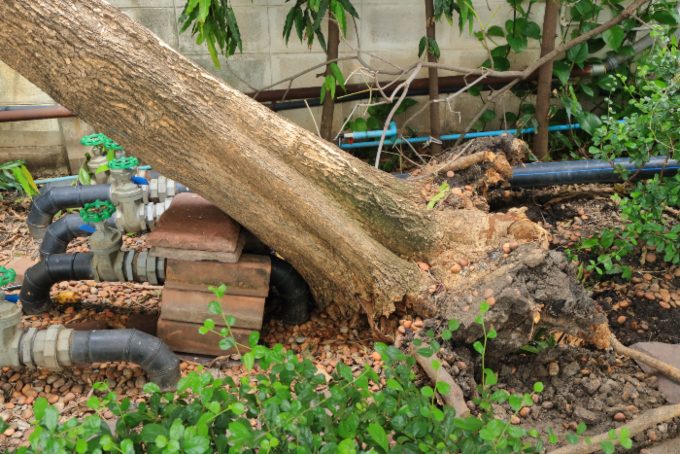Everything You Need to Know About Leaning Tree
Is a Leaning Tree Dangerous? Everything You Need to Know
Trees with a noticeable lean can be a cause for concern, prompting fears about their stability and the danger they may pose to their surroundings. While some trees grow at an angle naturally without any issues, others may lean due to more serious reasons, requiring a closer examination. In this article, we aim to shed light on the aspects of leaning trees, including their causes, potential dangers, conservation efforts, and when removal is the best course of action, with insights on how A Budget Tree Service can assist in managing such situations.

What Causes a Tree to Lean?
Trees can develop a lean for various reasons, some of which are part of their natural growth processes, while others indicate underlying problems:
- Natural Growth – In their quest for sunlight, especially in densely wooded areas, trees may grow at an angle. This type of lean is typically gradual and doesn’t compromise the tree’s stability.
- Soil Conditions – Poor soil conditions, such as erosion, compaction, or water saturation, can undermine the stability of a tree’s root system, leading to a lean.
- Root Damage – Construction, landscaping activities, or heavy machinery can damage the roots of a tree, affecting its anchor to the ground and causing it to lean.
- Environmental Factors – Severe weather events like storms or high winds can cause trees to lean.
When Do Leaning Trees Become Dangerous?
Identifying a dangerous lean involves assessing several aspects of the tree and its surroundings:
- Degree of Lean – A significant or sudden change in the angle of the tree’s lean should raise immediate concerns about the tree’s stability.
- Tree Health – Trees showing signs of disease or decay, particularly in the trunk or root area, may be more likely to fall.
- Location – Trees leaning toward buildings, walkways, or utility lines pose a higher risk due to the potential for property damage or injury.
- Root and Soil Stability – Visible root lifting or soil cracking around the base of a tree indicates that the tree is losing its grip in the soil, increasing the risk of toppling.
Can You Save a Leaning Tree?
The feasibility of saving a leaning tree depends on a careful assessment of its condition, age, and the cause of the lean:
- Young Trees – Slight leans in younger trees can often be corrected through staking or the application of guy wires, guiding the tree back to a more vertical growth pattern.
- Pruning – Pruning can alleviate weight from the leaning side of the tree, potentially stabilizing it by rebalancing the canopy.
- Support Systems – For larger, more mature trees, professional arborists may recommend more complex support systems to provide stability without compromising the tree’s health.
When Should You Remove a Leaning Tree?
Deciding to remove a leaning tree is a significant decision that should be based on a thorough risk assessment:
- Irreversible Damage – Trees with significant structural damage, extensive root decay, or those that have leaned beyond a safe angle often require removal.
- Proximity to Targets – Trees that lean dangerously close to homes, buildings, or public spaces may need to be removed to reduce the risk, especially if other measures are not feasible.
- Health of the Tree – Trees that are diseased, dying, or already dead and leaning pose a high risk of falling and should be removed promptly.
Get Expert Help from A Budget Tree Service
Managing a leaning tree, whether through conservation efforts or removal, requires the expertise of a professional arborist. A Budget Tree Service offers professional evaluations and services to address the unique needs of leaning trees. Our team of experienced arborists can provide the necessary interventions, from pruning and support to complete removal, ensuring the safety of your property and the health of your landscape.
While a leaning tree can sometimes be a natural and harmless occurrence, it’s important to remain vigilant and seek professional advice when a tree’s lean appears to pose a potential danger. With the right care and intervention, it’s possible to preserve the beauty and benefits of trees safely.
A Budget Tree Service, Inc., established in 1982, offers comprehensive care services across Seminole, Orange, Osceola, Volusia, and Brevard Counties, Florida. Specializing in maintaining the health and beauty of trees, our company provides professional arborist services including pruning, stump grinding, and complete tree removal. Catering to both residential and commercial properties, our experienced team is equipped to handle jobs of any size, ensuring safety and efficiency. Beyond tree care, we offer emergency services for storm damage and additional property improvement services like debris removal and land clearing. Committed to affordability and quality, A Budget Tree Service is dedicated to enhancing Central Florida’s neighborhoods, one tree at a time.
For more information about our company, or to schedule a service, contact us via our website or give us a call at 407-792-4582. We look forward to serving you!
